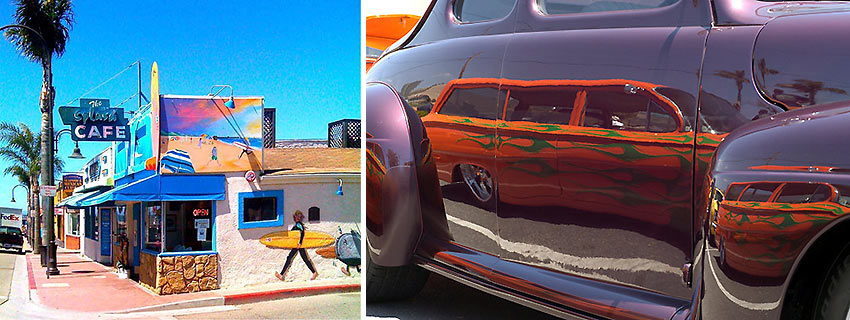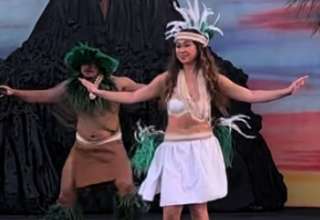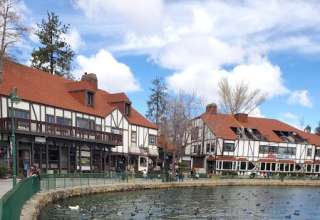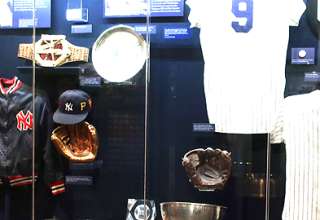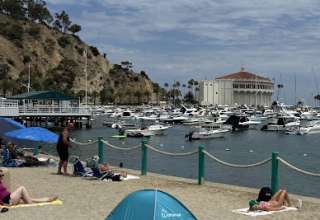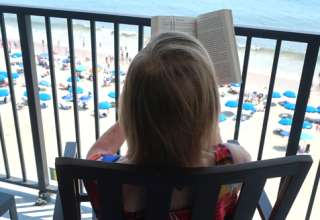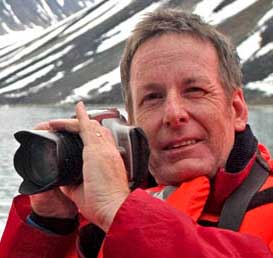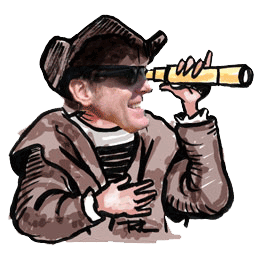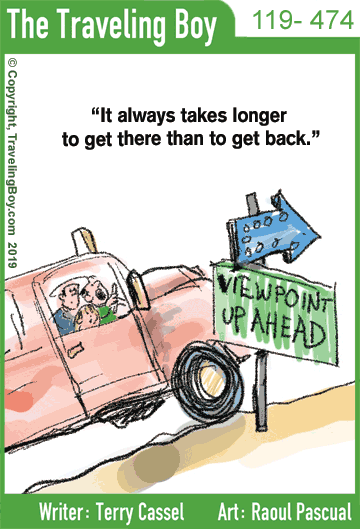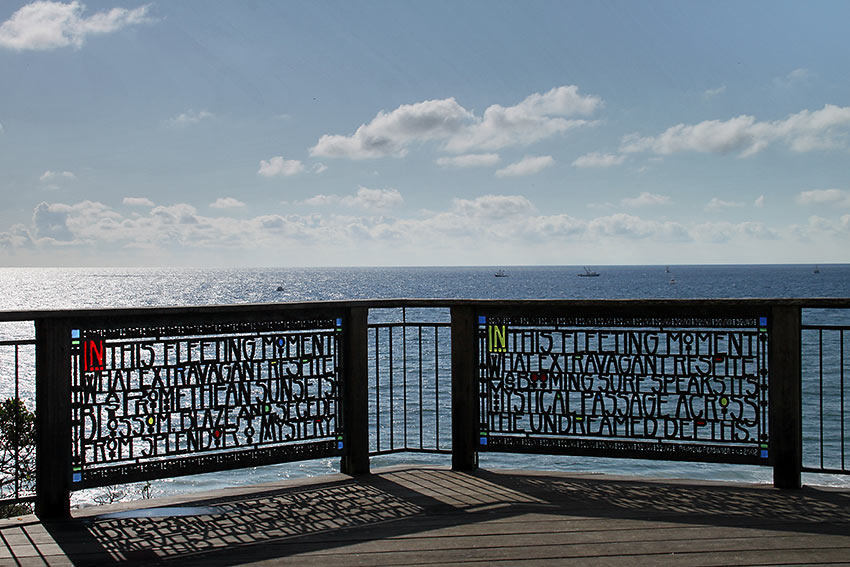
They came by the thousands. It was not the first time, nor would it be the last. These were young Americans, many of whom who had never lived more than forty-miles from their place of birth. This all changed with the bombing of Pearl Harbor. Most of the U.S. military bases were located in California and the recruits were shipped to an unfamiliar landscape of wide-open spaces, eternal sunshine, crystal-clear ocean waters and groves of citrus trees where you could pick an orange right from the branch. When WWII ended, many of those who were fortunate enough to return home remembered this paradise found. Winters didn’t mean having to dig your car out of the snow each morning or wearing your heaviest boots and gloves to the factory. Many of these families packed their bags and headed to this promised land of the West – where the beaches were wide and expansive, and the Pacific horizon seemed to say that anything was possible.
This California no longer exists. The citrus groves have been razed and track homes have taken their place. Factories and industries have flourished on the once inexpensive and seemingly limitless terrain. Southern California, has now become something else, and, like all things in our land, will continue to grow and evolve.
With endless attractions along the way, there is still a pieces of paradise that resembles this dream of the post WWII years. Although it too has changed, this area still remains the closest to reflecting the California of that bygone era. It begins on the Pacific Coast Highway in San Diego, and continues north to Pismo Beach on the Central California Coast.
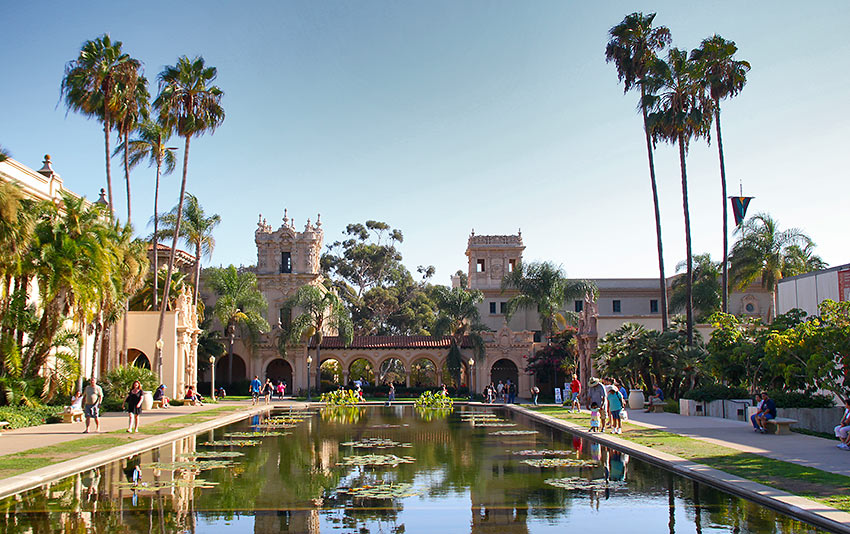
San Diego – “America’s Finest City”
Arriving at the Santa Fe Depot, we discovered that we didn’t need a car or even want one. So we ditched my car and headed to the San Diego Metropolitan Transit System Bus and Trolley, which allows you to be car-free while exploring the city. The purchase of a three-day Day Tripper pass would transport us to all the attractions.
A short trolley ride took us to the heart of the vibrant East Village. Once a derelict warehouse district, the East Village redefined itself with the completion of PETCO Park baseball stadium. Now downtown’s hippest neighborhood, the area features luxury hotels, condominiums, residential/work lofts, restaurants and galleries. Who would have thought that unassuming San Diego would become a national role model for urban renewal? The historic Gaslamp Quarter, which spills into (or is part of) the East Village (everyone seems to have a different opinion), is lined with Victorian-era buildings, housing restaurants, pubs, galleries, theaters and shops. For history buffs, the Victorian-style Horton Grand Hotel was once the seven-year home of Wyatt Earp.
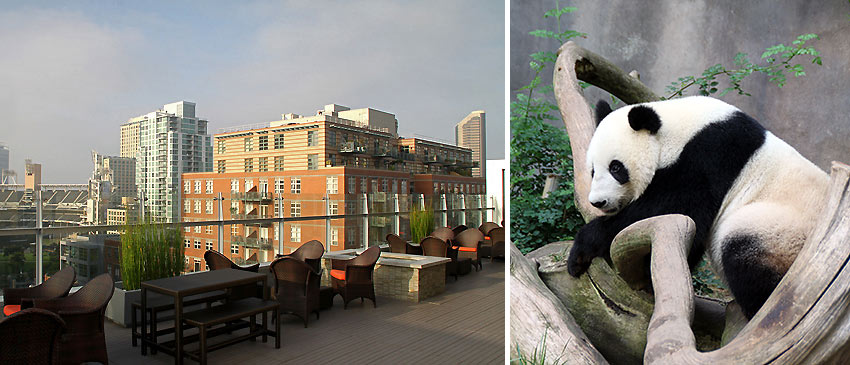
Accommodations were at the chic Hotel Indigo, the first LEED certified green hotel in San Diego. Virtually all the building materials used were recycled products, with a design reflecting Fibonacci numbers and plant spirals, creating a harmonious ambience. Creature comforts included spa-like baths, 37” flat panel HDTVs, designer furnishings, plush bedding, sleek hardwood floors and complimentary high-speed Internet access. Sitting at the 9th floor Phi Bar Terrace, we gazed in wonder at PETCO Park’s field, even though there wasn’t even a game in process.
Old Town is the first permanent European settlement in California. In 1769, Father Juniper Serrano established a chain of 21 missions; each situated a day’s horse ride away. Today the San Diego Mission overlooks a collection of historic adobe buildings, shops and restaurants. The Old Town Trolley tour is the best way to get an overview of what is considered the birthplace of California.
The 100-acre San Diego Zoo is a sanctuary for over a thousand animals; a place to learn of conservation efforts to protect wildlife from extinction. The setting is stunning, with exotic plant life utilized throughout the park. Start your tour with a tram ride, which offers a comprehensive overview of the zoo.
Balboa Park is the nation’s largest urban cultural park. Home to 14 museums, performing arts venues, spectacular gardens, it is a must-see attraction. Admittance is free to the grounds, but there is an admission charge for a number of the attractions. The Stay-for-the-Day pass offers admission to your choice of any 4 of the 14 participating attractions.
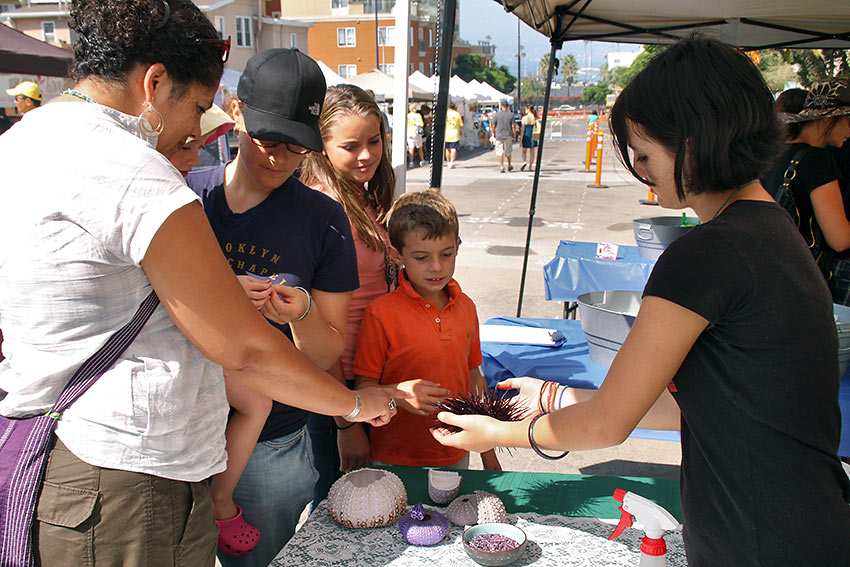
Little Italy dates back to the days of San Diego’s fishing industry when generations of Italian fisherman called the area home. Today Little Italy is a vibrant neighborhood of restaurants, pubs, galleries and shops. It also features a world-class Saturday farmer’s market.
A trip to the USS Midway Museum was how we wanted to end our San Diego stay. The collection of 60 exhibits and 25 restored aircraft aboard the aircraft carrier was a heartfelt tribute to the men and women who have served our country. The tour colored my thoughts as we strolled back to our car in preparation for the next stop in our journey.
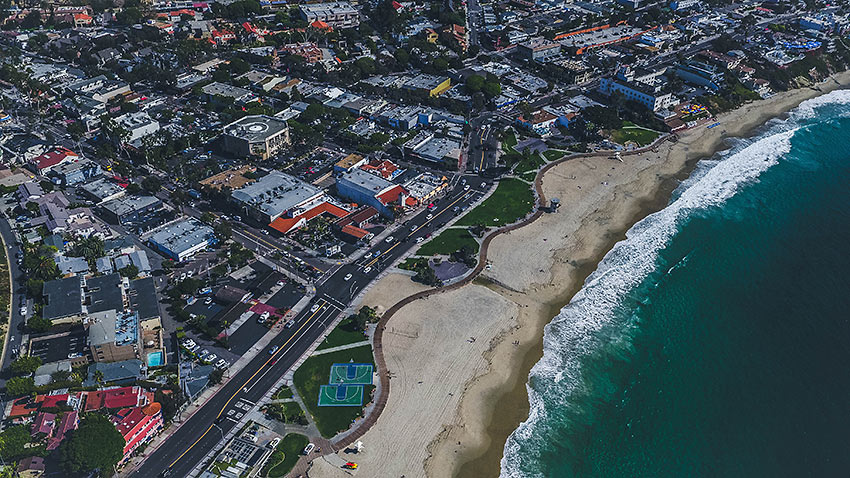
Laguna Beach – The California Riviera
Laguna’s history dates back to the arrival of the first Amer-Indian tribe – believed to originate from the Shoshone family. Attracted by the plentiful supply of fish and shell fish, they also hunted deer in the surrounding canyons. They referred to the area as Lagona (lakes), due to the fresh water lakes in the canyon. In 1933, a 17,000 year-old-skull was found in Laguna, indicating the tribe’s early presence in the area. In the 1800s, the Spanish retitled the area Canada de las Lagunas (canyon of the lakes).

The first Euro-American settlers arrived in 1870, followed by tourists who came for the cool ocean breezes as a reprieve from California’s brutal inland weather. Accommodations were in tents, but this all changed with the building of the Hotel Laguna in 1889. Now christened Laguna, the area was on its way to becoming a popular tourist resort. Hollywood was not immune to Laguna’s charm, with the likes of Bette Davis, Mary Pickford, Judy Garland, Rudolph Valentino, Charlie Chaplin and Mickey Rooney maintaining homes in town. Laguna was transformed into an arts community when painter Norman St. Clair first set his eyes on this stunning landscape. He was so taken by the beauty of the area that he spread the word to his artist colleagues in San Francisco. Today Laguna boasts over 100 galleries, the Laguna Art Museum, Sawdust Festival, Art Walk and the Pageant of the Masters, an once-in-a-lifetime re-creation of paintings, staged using real people. The city fathers have established several measures that ensure slow growth and preservation of Laguna’s terrestrial and marine environments.
Laguna’s Downtown Village tree-lined streets, features aforementioned galleries, quaint boutiques, restaurants, palatial resorts, intimate bed and breakfasts and seaside cottages.
Our accommodations were at Sunset Cove Villas, a selection of eight themed luxury villas, nestled on a bluff overlooking the ocean in the heart of the village. We scored big time by booking the two-bedroom, two-bath, fully-equipped Seychelles Villa – a mere few steps to the beach.
We could have stayed there forever, luxuriating on the private deck, but then remembered there was an important appointment on our schedule – a painting class at the home of the Sawdust Art Festival.
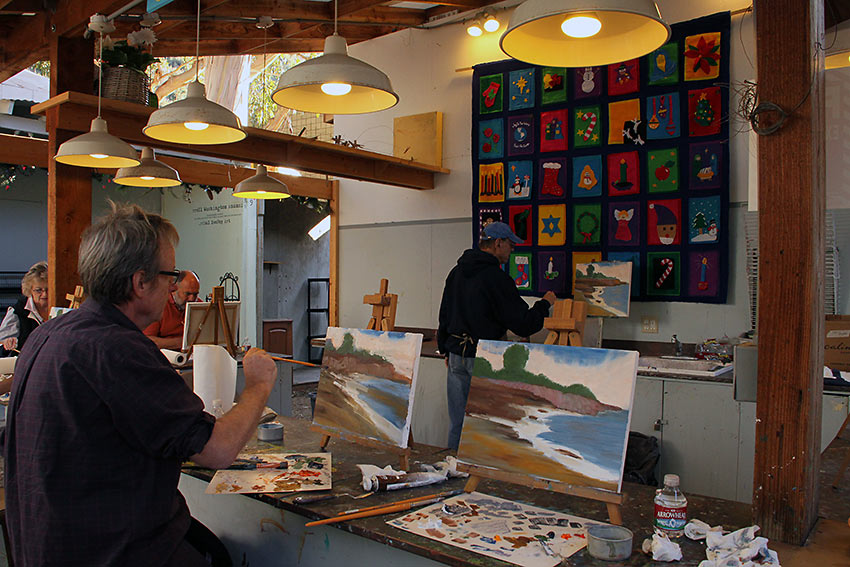
The intimate class was conducted by John Eagle, a former stockbroker who became a full-time painter in his mid-fifties. He’s listed in “Who’s Who in American Art.” After a few brush strokes, it became clear that I was not destined to be another Monet, but John was patient with me and I found the experience both insightful and, above all, relaxing.
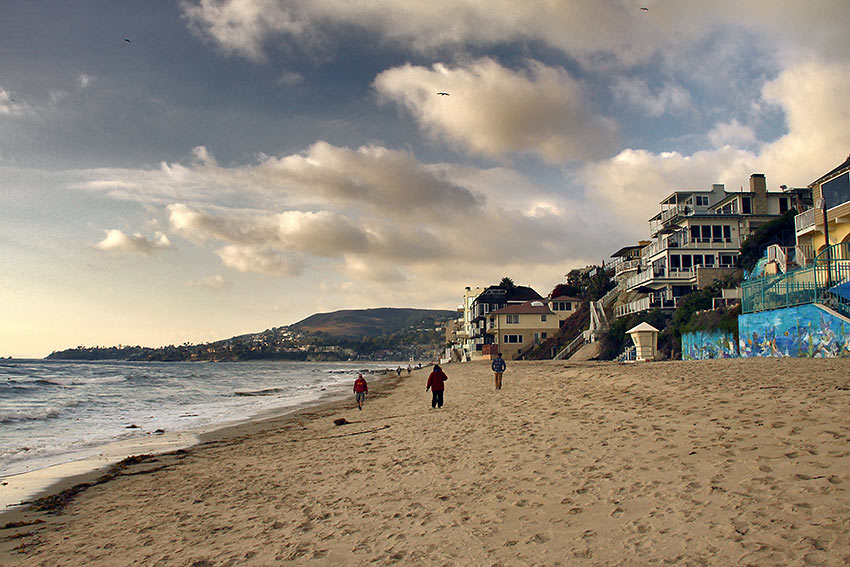
After a day of beachcombing and gallery hopping – two of which featured John’s inspiring Impressionist-style paintings – I decided that painting was destined to be part of my future and planned on purchasing my own art equipment.
We continued on our lazily drive up the Pacific Coast Highway, lined with beach towns and spectacular scenery. Soon we were in Malibu. The morning sun was just breaking over the ocean, with scores of surfers waiting patiently on their boards for the BIG One; a wave so monumental that it would change their lives. I remembered a trip to the North Shore on Oahu where a lifelong surfer told me that he became a dedicated surfer when he rode a wave that was so majestic and powerful that he literally fell in love with it. He had been waiting over another ten years to ride another one. Such is the passion of the surfer in their quest to find the perfect wave.
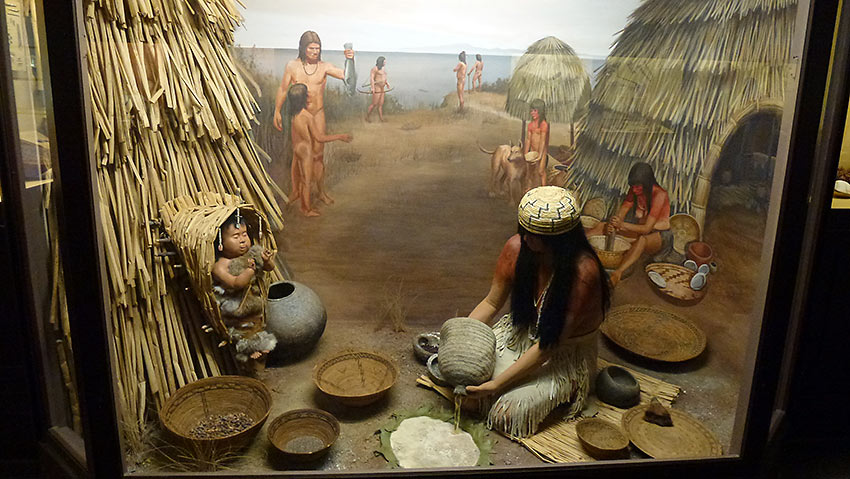
The Central Coast
We decide to do pit spot, then walk up on the Malibu Pier to watch the rubber clad surfers. I noticed a billboard in the distance which advertised the Chumash Casino. It made me think of the REAL first inhabitants of the Central Coast.
Archaeologist findings indicate that for over 13,000 years the Chumash Tribe were the first inhabitants of the central coastal regions of California with the first settlement started near the Santa Barbara coast. The name Chumash means bead maker or seashell people. Pismo Beach, in fact, got its name from the Chumash, who referred to the area as a place to find pismu, or tar. Spanish archeologists called these early coastal residents playano (beach people). The Chumash, renowned for their magnificent redwood plank canoes, subsided on a staple of ground acorns, wild game and the (now almost depleted) Pismo Clam. The Chumash’s way of life almost ended during the Spanish Missionary Period, but the remaining decedents found a rebirth with their Las Vegas-style casino in Santa Ynez – the Chumash Casino.
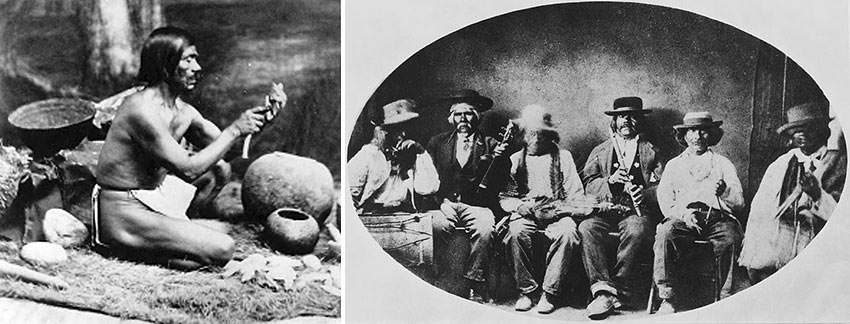
Chumash History from the Perspective of the Chumash
Our people once numbered in the tens of thousands and lived along the coast of California. At one time, our territory encompassed 7,000 square miles that spanned from the beaches of Malibu to Paso Robles. The tribe also inhabited inland to the western edge of the San Joaquin Valley.

Ventura – “The Real California”
I gazed in wonder at the spectacular land and seascape. The place: Ventura – nestled between Malibu and Santa Barbara on the southern-most part of California’s Central Coast. Billed as ‘The Real California,’ we couldn’t wait to see what it had to offer.
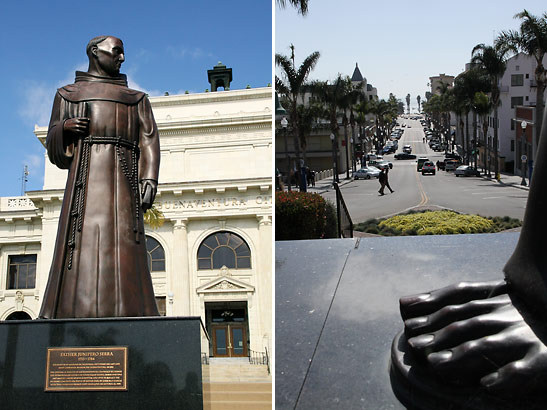
With the arrival of the Spanish in the 18th Century, Mission San Buenaventura was established by Father Junipero Serra, the ninth of the California missions. He named it after the Italian, St. Bonaventure, hence the nickname: city of good fortune. Ventura was incorporated in 1866, and grew due to the establishment of the Union Oil Company and an influx of settlers from the east. Located between the Ventura River and the Santa Clara River, settlers found the soil so fertile that citrus grew better there than anywhere else in the state. In 2005, the City Council adopted a visionary plan, focusing on delivering key services within available means and promoting sustainable prosperity.
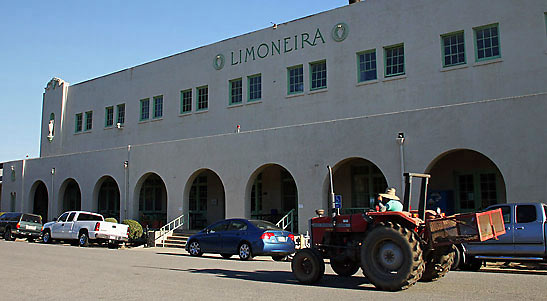
“Hey, wanna hit some thrift shops,” Deb gleefully shouted as we strolled down Main Street. Indeed, there were scores of them lining the avenue. What I liked best is that Ventura’s revitalized downtown reflects a hybrid of a bygone era and the glitz of new boutiques, wine bars, restaurants, inns, galleries and stage theaters. Suggested stops: the Mission San Buenaventura, Museum of Ventura County and Albinger Archaeological Museum. Make sure to pick up a complimentary Historic Downtown Walking Tour Guide at the Ventura Visitors & Convention Bureau.
The Ventura coast possesses vast stretches of uncrowded beaches, surf spots, harbor cruises and a gentle 13-mile coastal bikeway – which made me aware that I needed to get into better shape. With the sun at my back I remembered that early Spanish settlers also coined Ventura the land of endless summers with its year-round daytime temperatures averaging 70 degrees.
Ventura’s most amazing attraction lies 14 miles out to sea; Channel Islands National Park comprises five of the eight Channel Islands off the California Coast: Anacapa, Santa Cruz, Santa Rosa, San Miguel and Santa Barbara Island. This stunning nature preserve is often referred to as the Galapagos of the North because it is home to more than 2,000 species of plants and animals – 145 of which are unique to the islands and found nowhere else on earth. Excursions launch from Ventura Harbor daily, with hikers on board looking to either camp or snorkel in the crystal clear waters. We opted for a package with Channel Islands Outfitters and Island Packers, where the voyage began on an Island Packers bio-diesel boat to Scorpion Harbor on Santa Cruz Island. Even the ride over was a great experience, spotting whales, dolphins and thousands of sea birds. Once we reached the island, we found recreational options abound, including hiking, camping, snorkeling and kayaking.
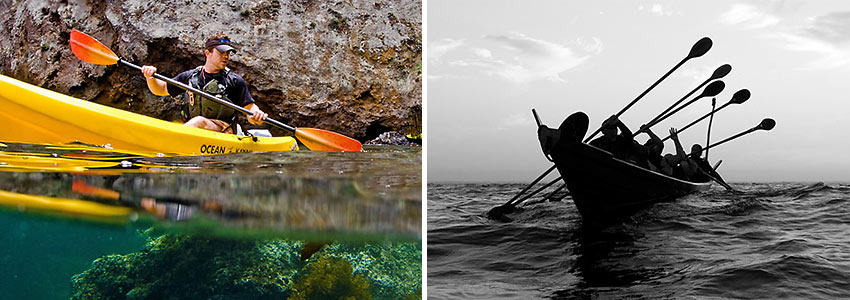
We opted for a kayak tour guided by the gentle hands of Channel Islands Outfitters’ Clay Downing. Paddling through arches and into sea caves, reminded me of cenotes, the fresh water underground springs in Mexico’s Yucatan Peninsula.
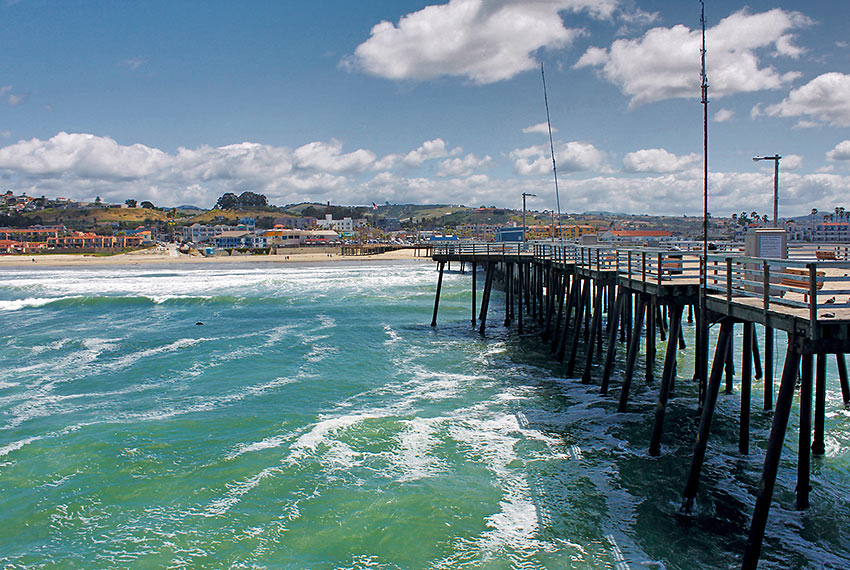
Pismo Beach – “Classic California”
The city of Pismo Beach was incorporated in 1951 and from the beginning was a natural as a tourist destination with its long white beaches, great weather, and spectacular views. This is not the town, though, where time has stood still. However, it has done its best to embrace the best of the past and has engineered tourist friendly packages that showcase all the wonders the area has to offer today. As we explored Pismo, I could see it was a place where everyone seems to fit – surfers and seniors walking their dogs share the same beach. Fishermen try to catch the big one from the iconic Pismo pier. You can drive and camp on the beach just down the coast at the Oceano Dunes State Vehicular Recreation Area. Pismo boasts over 30 restaurants and more than 50 motels, hotels, and RV parks. You can enjoy bicycling, golfing, hiking, nature walks, water sports, Hummer adventure tours and horseback riding – also right on the beach!

Pismo Beach is the winter home of the Monarch butterfly that comes to stay annually from October to February. Pismo also makes a wonderful home base for exploring the Central Coast’s other attractions that include the Danish Village of Solvang (Danish for ‘sunny field’), a stunning village nestled in the Santa Ynez Valley. Founded in 1911 by a small group of Danish teachers, Solvang is the place for fine restaurants serving authentic Danish cuisine, import shops, windmills, hayrides, Danish festivals and activities for all ages. It is also home of the Old Mission Santa Inés.
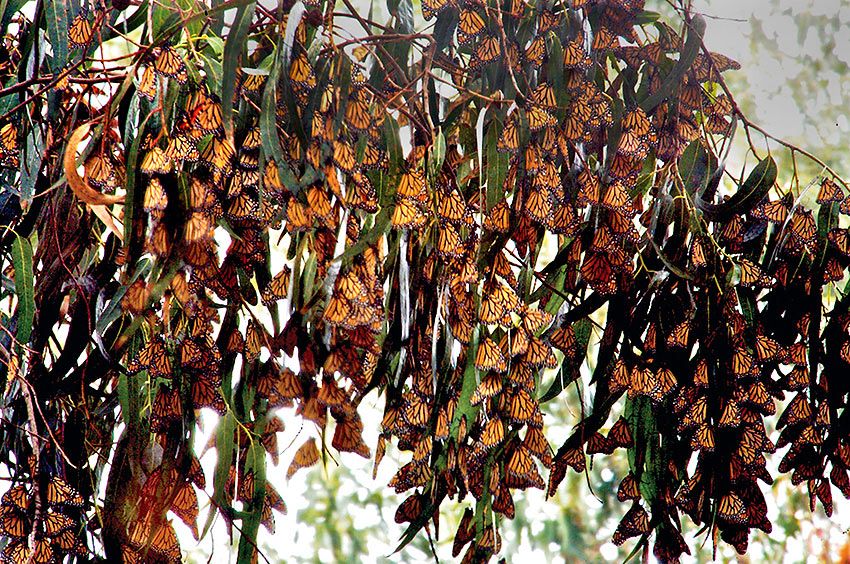
Pismo also serves as the gateway to Hearst Castle, as well as a home base for exploring well-over 100 wineries (think the film, “Sideways.”) shops, boutiques and little B&Bs of the quaint village of Cambria, and the previously mentioned Chumash Casino. Yes, Pismo lived up to its Classic California moniker. But the real attraction was the Pacific Ocean. Paradise found. We couldn’t wait to explore the expansive and pristine beaches. We could spend some serious time here. But now after seven-days on the road it was time to relax… even though I’d been doing plenty of that already.
